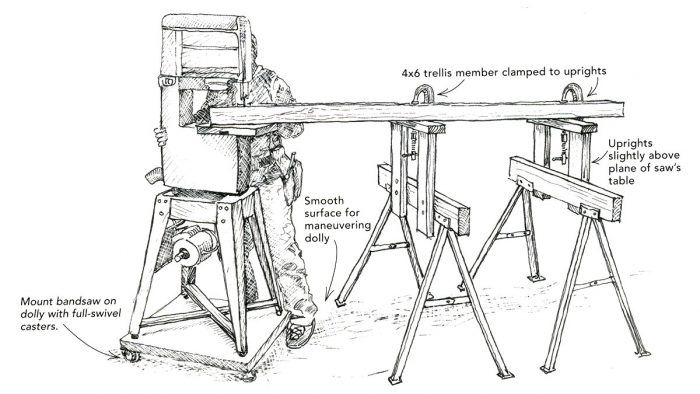
Click here to enlarge the illustration above.
Our company frequently builds timber-frame houses and garden structures with decorative cuts on the ends of the timbers. These timbers are at least 4 in. thick, and making clean, square cuts on their ends in an efficient manner is critical. As shown in the drawing, we’ve streamlined the process by mounting a bandsaw on a site-built piano dolly.
The important considerations are:
• A smooth floor to ensure unimpeded movement for the saw.
• Full-swivel casters for the dolly.
• A sturdy support system to hold the timber fast slightly above the height of the saw’s table.
The more complicated the decorative profile, the narrower the blade should be. For example, a simple cut like the one illustrated here can be made with a 1/2-in.-wide blade. Fussier cuts with tighter radii likely will require a 1/4-in.-wide blade.
—Mike Nathan, Hailey, ID
Edited and illustrated by Charles Miller
From Fine Homebuilding #174
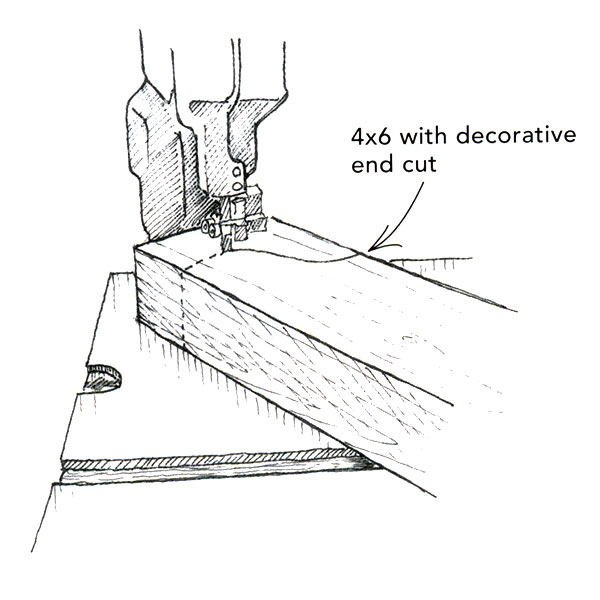
















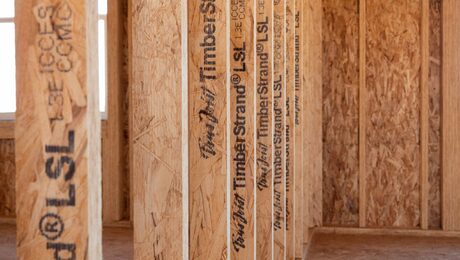
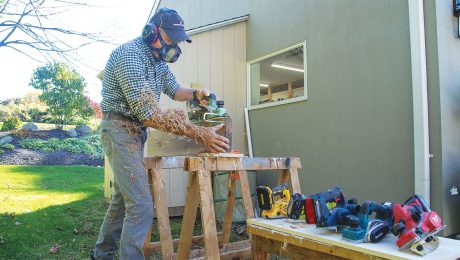

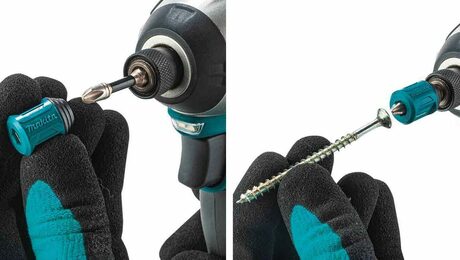










View Comments
I've made a similar (base) . . .the wheels are positioned in a different sequence. Only two are swivel, a ridged wheel is positioned directly under the cutting portion of the blade. . . . . .https://flic.kr/p/UyNWkg
Gotta wonder how they did those decorative cuts back in the old days before bandsaws on wheels on smooth concrete floors. An apprentice with a coping saw?